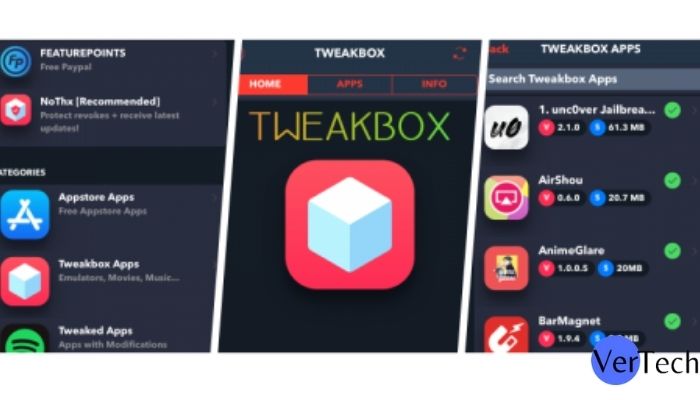Tech
6 Risk Management Framework (RMF) Steps

The Risk Management Framework (RMF) is a set of guidelines which define how United States government IT systems are designed, protected and controlled.
The RMF was initially created in the Department of Defense (DoD) in the early 1990s, the RMF has been adopted by majority of US government information system in the year 2010. The National Institute of Standards and Technology (NIST) manages NIST and serves as the foundation of any security plan for data.
The broadest definition of RMF demands that companies identify which risks to data and system they face and to take appropriate measures to minimize the risks. The RMF is broken down into six interconnected, but distinct phases.
Stages
1. Categorize Information Systems
- Utilize NIST standards for categorizing information and systems , so that you can make an accurate risk assessment of the systems.
- NIST provides information on the types of information and systems you need to include.
- What level of security do you have to establish based on this classification.
2. Select Security Controls
Choose the appropriate security control that you can find in NIST publication 800-53, which is designed to “facilitate a more consistent, comparable, and repeatable approach for selecting and specifying security controls for systems.”
3. Implement Security Controls
Set the controls you chose in the previous step into the correct place. Document all steps and procedures you’ll need to keep them in operation.
4. Examine Security Controls
Check that the security measures you put in place are functioning as they should in order to limit risk to your business and your data.
5. Authorize Information Systems
Are security controls functioning effectively to limit the risks to the business? That means that the control on that system is legally authorized! Congrats!
6. Monitor Security Controls
Monitor and evaluate the security controls’ efficiency and implement changes to ensure that the controls’ efficiency. Record any changes made, conduct regular impact analysis and report security controls’ performance to the designated authorities.
What Can A Efficacious Risk Management Framework Benefit A company?
While the RMF is an obligation for companies working together with US Government, implementing an efficient risk management system will help any company. The main objective of working towards RMF conformity is development of an asset and data management system that provides complete protection from all cyber-related risks that you are exposed to.
In particular, establishing an effective risk management framework can offer a business certain advantages:
Asset Protection
A well-designed risk management strategy will focus on knowing the risks your company is exposed to and make the necessary changes to safeguard your assets and your business. A comprehensive risk management strategy can help ensure the security of your data as well as your assets.
Reputation Management
Reputation management is a crucial aspect of modern-day corporate practices. Managing the negative effects of cyber-attacks is a crucial aspect of making sure that your reputation is secure. The public across the US are becoming more aware of the importance of data privacy and this is not just due to the fact that US legislation on privacy is getting more stringent. A breach of data can damage your business’s reputation. A solid risk management system will allow companies to quickly assess any weaknesses in the enterprise’s control and design a strategy to mitigate or prevent the risk of a reputational loss.
IP Protection
Nearly every business is a holder of intellectual property that needs to be secured, and a risk management strategy is just as applicable in protecting this intellectual property, as information and possessions. If you offer, sell distribution, offer, or sell products or services that offers you an advantage over competitors and you’re exposed to risk of Intellectual property theft. A risk management strategy can to protect you from potential losses of competitive advantage, business opportunities and even legal risk.
Analyzing Competitors
In the end, establishing an effective risk management strategy will have positive impacts on the running of your business. By listing the risks you are facing and implementing measures to reduce the risks, you’ll also be accumulating important information about the market which you are operating in and this alone – could help you gain an advantage over your competitors.
A Final Word
Aiming for RMF compliance isn’t just an obligation for those that work together with US government. If you can implement an assessment of risk and a management strategy that is effective it will be a great source of operational advantages.
The goal of your RMF processes should be the integrity of your data because the risks to your data are most likely to be the most serious threat that your company faces. This is the reason we’ve designed the Varonis software suite, which includes capabilities that let you quickly and efficiently establish a risk assessment and governance processes.
-

 Latest News3 years ago
Latest News3 years agoSoap2day Similar Sites And Alternatives To Watch Free Movies
-

 Software3 years ago
Software3 years agoA Guide For Better Cybersecurity & Data Protection For Your Devices
-

 Android2 years ago
Android2 years agoWhat Is content://com.android.browser.home/ All About? Set Up content com android browser home
-

 Blog2 years ago
Blog2 years agoMyCSULB: Login to CSULB Student and Employee Portal
-

 Android App3 years ago
Android App3 years agoCqatest App What is It
-

 Android App3 years ago
Android App3 years agoWhat is OMACP And How To Remove It? Easy Guide OMACP 2022
-

 Business3 years ago
Business3 years agoKnow Your Business (KYB) Process – Critical Component For Partnerships
-

 iOS2 years ago
iOS2 years agoTweakBox App – Best App for iPhone [Jan, 2023] | (iOS 15, Download, 2023)





